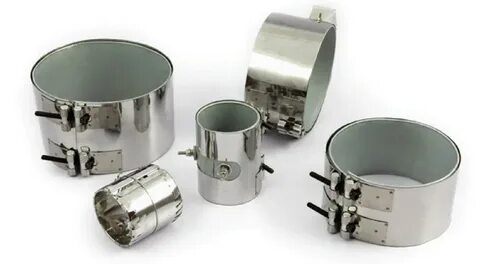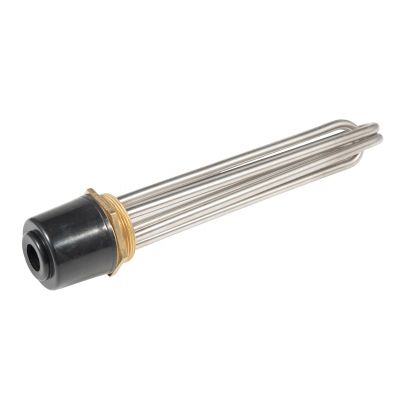Best Band Heater: A Manufacturer Guide

Choosing the right band heater manufacturer can be overwhelming. With countless options available, it’s crucial to understand the nuances of band heaters and the factors to consider when selecting a manufacturer. This guide will equip you with the knowledge to make informed decisions. Understanding Band Heaters Band heaters are cylindrical heating elements that wrap around cylindrical surfaces to provide even heat distribution. Commonly used in industries like plastics, food processing, and chemical processing, band heaters are essential for maintaining optimal temperatures in various applications. Key Components of a Band Heater A typical band heater consists of: Sheath: The outer protective layer is usually made of stainless steel. Insulation: Material between the sheath and heating element, preventing heat loss. Heating Element: The core component that generates heat, often made of nickel-chrome alloy. Terminals: Connection points for power supply. Types of Band Heaters Band heaters are categorized based on their insulation material: Mica Band Heaters: Use mica as insulation, offering good heat transfer and durability. Ceramic Band Heaters: Employ ceramic insulation, providing excellent heat resistance and longevity. Mineral Insulated Band Heaters: Utilize magnesium oxide insulation, which is suitable for high temperatures and corrosive environments. Factors to Consider When Choosing a Band Heater Several factors influence the selection of a band heater: Temperature Requirements: Determine the maximum operating temperature needed. Wattage: Calculate the required wattage based on the heating area and the desired temperature. Voltage: Match the heater’s voltage to your power supply. Dimensions: Ensure the heater’s dimensions align with the cylindrical surface. Environment: Consider the operating environment, including temperature, humidity, and corrosive substances. Selecting the Right Band Heater Manufacturer A reliable band heater manufacturer is crucial for the success of your application. Look for these qualities: Experience and Expertise: Choose a manufacturer with a proven track record in the industry. Customization Capabilities: A manufacturer that offers custom solutions can meet specific needs. Quality Control: Ensure rigorous quality control measures are in place. Material Selection: The manufacturer should offer a variety of materials for different applications. After-Sales Support: Excellent customer service and technical assistance are essential. Best Practices for Using Band Heaters To maximize the lifespan and performance of your band heaters: Proper Installation: Follow manufacturer guidelines for installation. Regular Inspection: Check for signs of wear or damage. Temperature Control: Use thermostats or controllers to maintain optimal temperatures. Cleanliness: Keep the heater clean to prevent overheating. Safety Considerations Band heaters can pose safety risks if not handled properly: Wear Protective Gear: Use gloves and safety glasses when handling hot heaters. Proper Grounding: Ensure the heater is grounded to prevent electrical shocks. Ventilation: Provide adequate ventilation to avoid overheating. Fire Safety: Keep flammable materials away from the heater. Wrap Up Selecting the right band heater and manufacturer is vital for the success of your heating application. You can ensure optimal performance and longevity by understanding the different types of band heaters, considering key factors, and following safety guidelines.
Ultimate Guide to Tubular Heaters with Thermostat

A tubular heater with thermostat is more than just a heating device; it’s a tailored climate control solution. It’s the unsung hero of many spaces, delivering consistent warmth without breaking the bank. But with countless options flooding the market, choosing the right one can feel like searching for a needle in a haystack. Fear not! This guide will illuminate the path, transforming you from a heating novice to a thermostat-savvy expert. Understanding Tubular Heaters with Thermostat At its core, a tubular heater is a long, slender heating element encased in a protective sheath. It’s often made of aluminum or stainless steel. The “tubular” part refers to its shape, while the “heater” part signifies its function – to generate heat. But what truly sets it apart is the thermostat. This intelligent companion ensures your space stays at the desired temperature, preventing overheating and optimizing energy consumption. How Tubular Heaters with Thermostat Work The magic happens within the heater’s core. Electricity flows through the resistive element, generating heat. This heat is then transferred to the surrounding environment. The thermostat, acting as the brain of the operation, continuously monitors the temperature. If it drops below the set point, it signals the heater to turn on. Conversely, if the temperature rises above the set point, it switches off. This constant cycle maintains a steady temperature. Types of Tubular Heaters with Thermostat Not all tubular heaters are created equal. Understanding the different types is crucial for selecting the perfect fit. Standard Tubular Heaters: These are the most common type, offering basic heating functionality with a thermostat. They’re ideal for general-purpose heating in spaces like garages, workshops, or greenhouses. Explosion-Proof Tubular Heaters: Designed for hazardous environments, these heaters are built to withstand explosive atmospheres. They are commonly used in industrial settings. Waterproof Tubular Heaters: Perfect for damp areas, these heaters have a protective coating to prevent water damage. They are often used in bathrooms, kitchens, or outdoor spaces. Factors to Consider When Choosing a Tubular Heater with Thermostat Selecting the right tubular heater involves several factors: Size of the Area: The heater’s wattage should match the room’s size to ensure efficient heating. Desired Temperature: Consider the ideal temperature for your space and choose a heater with a suitable thermostat range. Mounting Options: Wall-mounted, floor-standing, or portable options are available based on your preferences. Safety Features: Look for features like overheat protection, tip-over switches, and IP ratings for safety. Energy Efficiency: Consider the heater’s energy consumption to minimize utility bills. Installation and Maintenance Proper installation is essential for optimal performance and safety. Most tubular heaters come with installation instructions. If you’re unsure, consult a professional electrician. Regular maintenance is key to prolonging the heater’s lifespan. Clean the heater regularly to remove dust and debris. Check the thermostat’s accuracy periodically. If you notice any issues, contact the manufacturer or a qualified technician. Common Applications of Tubular Heaters with Thermostat Tubular heaters with thermostats find applications in various settings: Residential: Heating garages, basements, workshops, and bathrooms. Commercial: Maintaining temperature in warehouses, factories, and retail spaces. Agricultural: Providing warmth for livestock, greenhouses, and poultry farms. Industrial: Preventing frost in pipes, tanks, and equipment. Safety Tips for Using Tubular Heaters Never leave a heater unattended, especially when children or pets are present. Keep combustible materials away from the heater. Use the heater on a stable, level surface. Regularly inspect the power cord for damage. By understanding the nuances of tubular heaters with thermostats, you can make an informed decision and enjoy the benefits of consistent warmth in your space.










